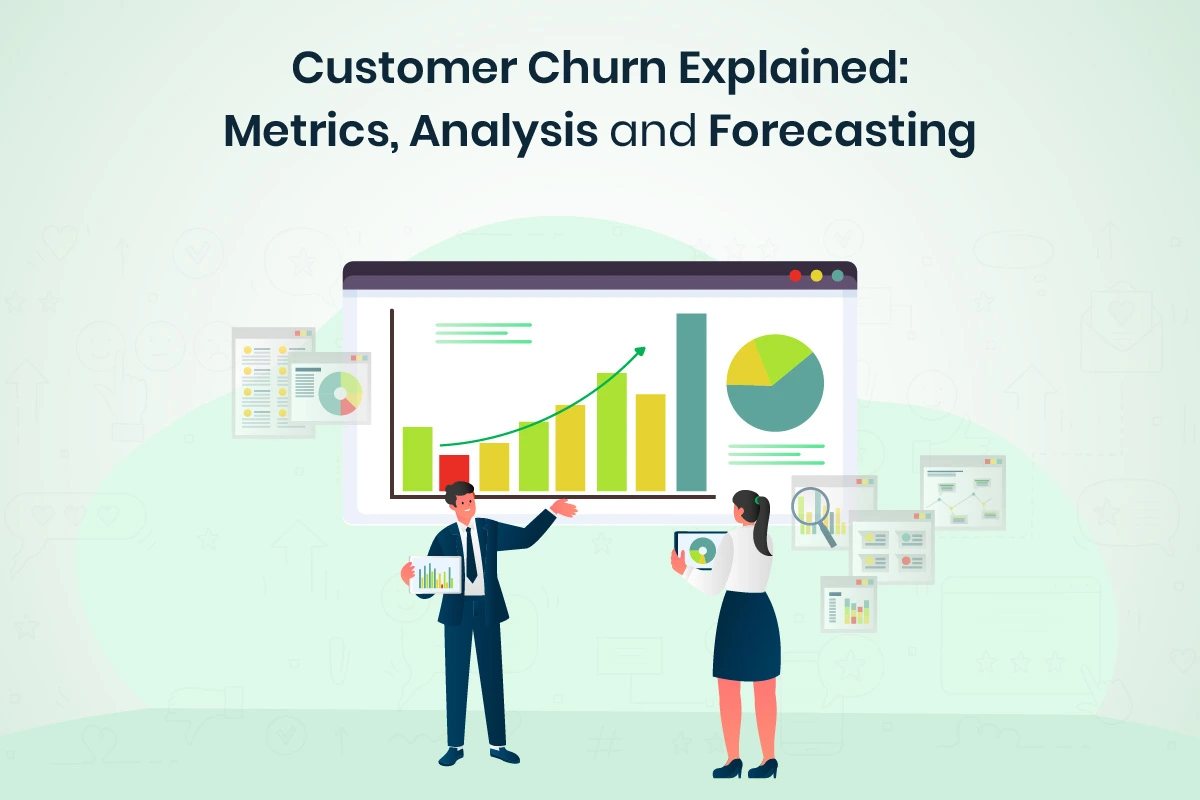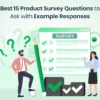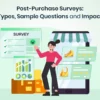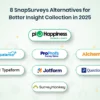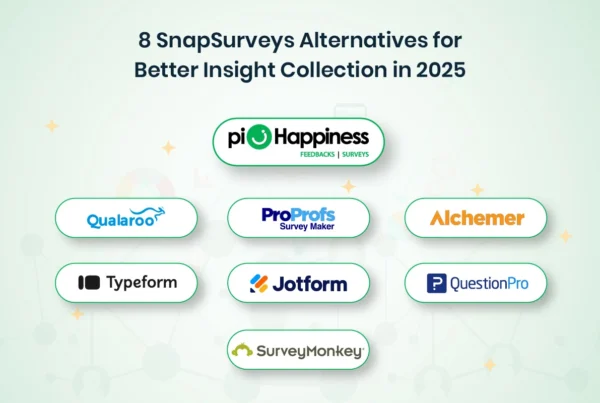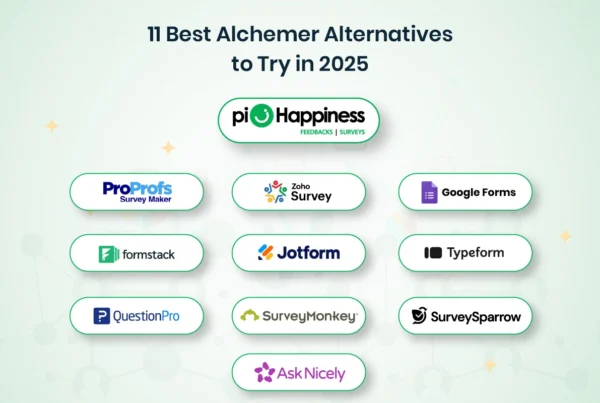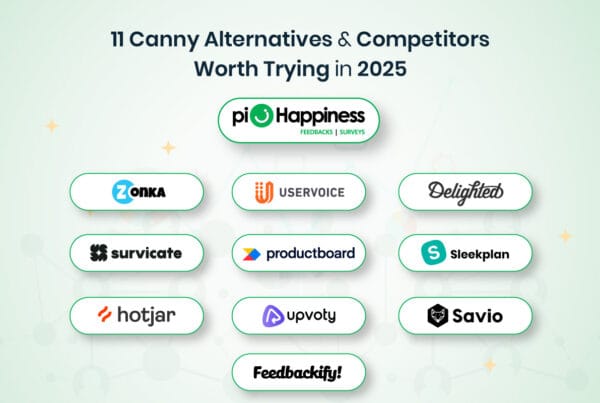Every business faces the challenge of customers discontinuing their relationship with a product or service. Accordingly, acquiring a new customer is significantly more expensive than retaining an existing one. This is where Customer Churn becomes a crucial metric. Yet churn is more than just a number. It is an indicator of customer dissatisfaction or maybe changing preferences. Maintaining a strong and loyal customer base begins by identifying, analyzing, and reducing churn.
What is Customer Churn?
Customer churn is the process when a customer totally disengages from a business and stops re-purchasing within a certain period of time. This moment indicates that a business will no longer have sales from that customer. By recognizing the roots of customer churn and implementing proactive strategies, a business may turn Churn into a growth opportunity.
💬 Stop churn before it starts with piHappiness!
🚀 Keep your customers happy and loyal!
Moreover, Customer churn can be sorted into two main groups, voluntary and involuntary. Voluntary churn refers to the situation when customers decide to leave mostly because of dissatisfaction and finding a better deal, or their changing needs. Involuntary churn is the condition that occurs due to situations out of a customer’s control.
To manage customer churns effectively, being proactive is of great importance. Progressive companies predict and work on reducing customer turnovers.
Calculating Customer Churn Rate
Calculation of the Customer Churn Rate is one of the essential Key Performance Indicator (KPI) metrics that, to a large extent, illustrate customer retention. A high churn rate points out that customers are dissatisfied or do not find sufficient value in what they receive, and the consequences of high churn are severe. A low churn rate means customers are satisfied and most likely will stick around.
If a company wants to stop customers from leaving, it must first understand how to measure this well. The Customer Churn rate is often found using a simple formula.
Churn Rate = (Number of Customers Lost During a Period / Total Customers at the Start of the Period) × 100
Although the formula might be a bit different for different businesses, the most common way is to take the number of customers who left during a certain period and divide it by the number of customers at the start of that period. Watching this number over time lets companies see how well they are keeping customers and find worrying signs before they become a larger issue.
Churn Analysis – The ‘WHY‘
Through a detailed churn analysis, companies can identify patterns, pain points, and behavior that lead to customers quitting. Churn analysis is about understanding WHY they left. The analysis comprises such factors as looking at customer demographics, their level of engagement, how often they use the product, and data on support interaction.
Businesses often use cohort analysis to study customer retention. This method puts customers into groups based on things like acquisition dates or demographics. It assists in tracking the loyalty of customer segments over time. For instance, we might notice a trend that customers acquired through paid ads are more likely to churn sooner than those who discovered the company through organic means. Moreover, a very effective technique is survival analysis, which forecasts the duration of the customers’ stay, particularly in the case of negotiating long-term B2B contracts.
Behavioral analysis examines usage metrics such as how customers use a product and how often they log in, or which features they use can be early warning signs. To get better feedback, businesses implement the voice of customers (VoC) programs. Surveys, discussions, or simply monitoring feedback on support tickets can all be employed as a means to achieve this.
The main idea of a gap analysis is to identify the differences between customer expectations and their actual experiences. These disparities may be attributed to customers’ perceptions, the company’s operations, the service provided, or the clarity of communication. Studying why customers leave helps us find the causes of their unhappiness and predict problems that might happen later, so we can keep our customers.
Predicting Customer Churn
Predicting churn is done by analyzing historical data to figure out whether customers are likely to make an exit in the near future. In recent years, machine learning technology has enabled these models to go further into the customers’ activities and purchases to pinpoint those with a churn risk more precisely.
These machine learning algorithms, including logistic regression, are notably simple and interpretable, making them the preferred choice for assembling such predictive models. According to this algorithm, the likelihood of churn is a function of usage and demographic data. These models are appropriate for those companies that need to know the main reasons for turnover and where the level of computational complexity is not their primary concern.
A Customer Churn model looks at things like how often customers use a service, when they last made a purchase, their satisfaction ratings, payment history, and support requests.
Strategies to Reduce Customer Churn
Businesses need to focus more on their customers to cut down churn. What it really means is providing value and making a positive impact on the customer’s time and again until they become your advocate. Here are a few customer retention strategies that businesses can give a thought about.
- Streamlined Onboarding: A seamless onboarding experience helps customers quickly understand and derive value from the product, reducing early drop-offs.
- Personalized Communication: Leveraging customer data to send personalized recommendations or milestone acknowledgement fosters a deeper emotional connection.
- Proactive Customer Support: Anticipating and addressing customer issues before escalating enhances satisfaction and prevents churn due to unresolved frustrations.
- Continuous Feedback Mechanisms: Utilizing tools to gather ongoing feedback helps identify and address dissatisfaction before it leads to churn.
- Loyalty Incentives: Implementing loyalty programs like exclusive perks that reward long-term customers can strengthen retention and discourage them from switching to competitors.
Economic Impact of Customer Churn
Every lost customer impacts your business negatively. During periods of high churn, revenue will be lost, referrals will be lost, upsells will be lost, and loyalty will be diminished. Lower rates of customer churn increase the value that the customer brings to your business, operational efficiency, and forecast precision. Reducing revenue churns even minimally for a subscription business increases revenue on the business for a long time. This should be a customer experience priority.
Tools to Reduce Customer Churn
To lower customer churn, relying on technology-based tools can prove to be effective. Tools like piHappiness enable businesses to gather feedback and monitor satisfaction levels through scores such as NPS or CES. Comparing this feedback with the loss of customer data, businesses are able to gain insight into customer health and spot issues before they esclate.
With AI analysis, predictive capability is built to a significant extent as the entire process of calculating the risk of churn is taken care of by automation. Such tools can surf through thousands of customer interactions in search of patterns indicative of risk and even send specific offers to win back customers. This automatic process reduces time and makes sure action is taken before a customer’s dissatisfaction turns into actual churn
Conclusion
Customer Churn is manageable despite its complexity. The key to conquering customer churn is to treat it as an opportunity for strategic insight. By carefully quantifying churn, deep diving to understand root causes, and building predictive models to anticipate losses, businesses can avoid loss of customers.
When this intelligence is directed toward deliberate, anticipatory, personalized retention efforts, businesses can significantly minimize churn, maximize lifetime value, and build a bedrock of sustainable, profitable growth. Because the war on churn isn’t won in a battle, it’s won in a strategic campaign of providing irrefutable value on an ongoing basis.
